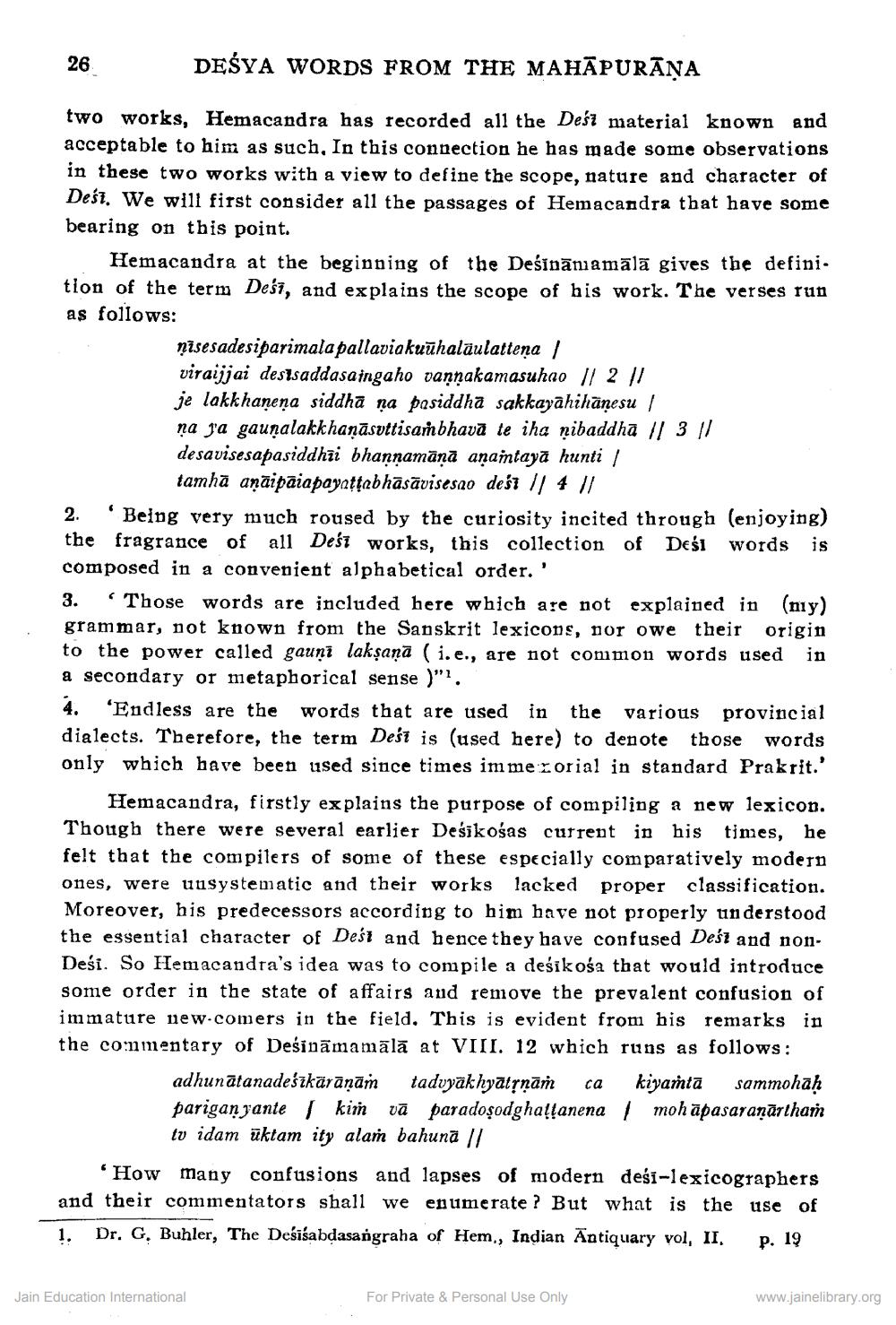________________
DESYA WORDS FROM THE MAHĀPURĀŅA
two works, Hemacandra has recorded all the Dest material known and acceptable to him as such, In this connection he has made some observations in these two works with a view to define the scope, nature and character of Dest. We will first consider all the passages of Hemacandra that have some bearing on this point.
26
Hemacandra at the beginning of the Deśināmamālā gives the definition of the term Desi, and explains the scope of his work. The verses run as follows:
nisesadesiparimala pallaviakuuhalaulattena |
viraijjai des saddasaingaho vannakamasuhao || 2 || je lakkhanena siddha na pasiddha sakkayahihänesu | na ya gauṇalakkhaṇāsvttisaṁbhavā te iha ṇibaddhā desavisesapasiddhii bhaṇṇamāṇā anamtayā hunti tamha anaipaiapayaṭṭabhasavisesao dest // 4 //
2.
Being very much roused by the curiosity incited through (enjoying) the fragrance of all Desi works, this collection of Desi words is composed in a convenient alphabetical order.
3 11
3. Those words are included here which are not explained in (my) grammar, not known from the Sanskrit lexicons, nor owe their origin to the power called gauni lakṣaṇā (i.e., are not common words used a secondary or metaphorical sense)"1.
in
4. 'Endless are the words that are used in the various provincial dialects. Therefore, the term Dest is (used here) to denote those words only which have been used since times immexorial in standard Prakrit.'
Hemacandra, firstly explains the purpose of compiling a new lexicon. Though there were several earlier Deśikosas current in his times, he felt that the compilers of some of these especially comparatively modern ones, were unsystematic and their works lacked proper classification. Moreover, his predecessors according to him have not properly understood the essential character of Dest and hence they have confused Dest and nonDesi. So Hemacandra's idea was to compile a desik ośa that would introduce some order in the state of affairs and remove the prevalent confusion of immature new-comers in the field. This is evident from his remarks in the commentary of Deśinamamala at VIII. 12 which runs as follows: adhunatanadesikärāṇām tadvyākhyātṛṇām ca kiyamtā sammohaḥ pariganyante / kim vā paradoṣodghaṭṭanena
mohāpasaraṇārtham
to idam uktam ity alam bahuna ||
'How many confusions and lapses of modern desi-lexicographers and their commentators shall we enumerate? But what is the use of 1. Dr. G. Buhler, The Deśisabḍasangraha of Hem,, Indian Antiquary vol, II. p. 19
Jain Education International
For Private & Personal Use Only
www.jainelibrary.org




